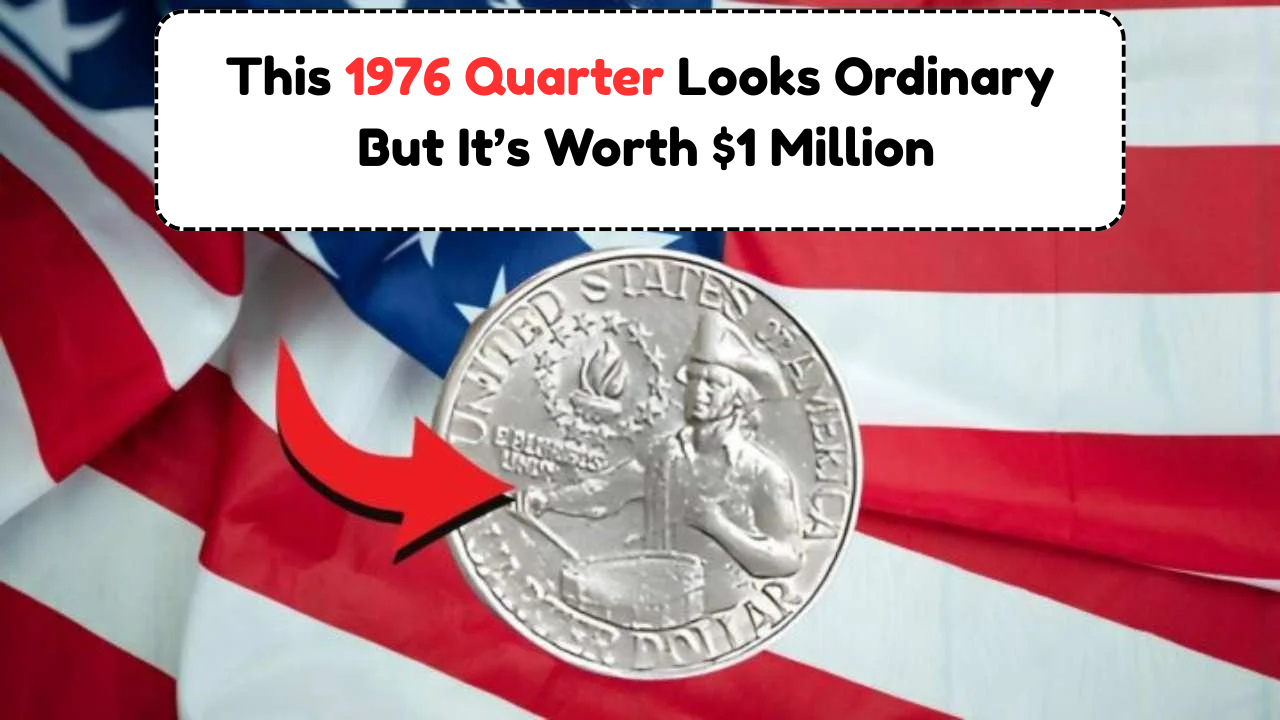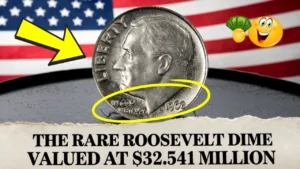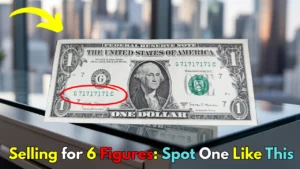You may want to take a closer look at your spare change — because one of the most sought-after coins in U.S. history could be right under your nose. The 1976 Bicentennial Quarter, originally worth just 25¢, has shocked collectors and investors alike by selling for up to $1 million — yes, a single quarter.
While millions of these quarters were minted to celebrate America’s 200th birthday, a small handful contain rare errors or unique features that make them incredibly valuable. In this guide, you’ll learn what makes these special Bicentennial Quarters so desirable, how to spot the million-dollar version, and why it’s still possibly circulating today.
If you enjoy coin collecting, history, or simply love the idea of finding treasure in your change jar — read on. Your next big payday might be hiding in plain sight.
Table of Contents
What Is the Bicentennial Quarter?
The Bicentennial Quarter is a special edition U.S. 25-cent coin minted in 1975 and 1976 to commemorate 200 years of American independence. Instead of the usual eagle on the reverse, this quarter features a drummer boy, with “1776–1976” marking the anniversary of the Declaration of Independence.
While over 1.6 billion of these coins were produced, only a tiny fraction are worth more than face value — and some extremely rare versions have fetched up to $1 million at auction.
History Behind the 1976 Bicentennial Quarter
To celebrate the Bicentennial of the United States, the U.S. Mint authorized special designs for three coins:
- The Quarter
- The Half Dollar
- The Eisenhower Dollar
The Bicentennial Quarter was unique because it was:
- The first quarter in U.S. history to feature a dual date (1776–1976)
- Designed by Jack L. Ahr, chosen through a national competition
- Released into circulation two years early (starting in 1975)
Bicentennial Quarter Design Overview
| Feature | Description |
|---|---|
| Obverse | George Washington (unchanged from regular quarter) |
| Reverse | Colonial drummer boy with torch of victory |
| Date | Dual date “1776–1976” |
| Designer (Reverse) | Jack L. Ahr |
| Mint Marks | P (Philadelphia), D (Denver), S (San Francisco) |
Why the Bicentennial Quarter Is So Valuable
Most 1976 quarters are worth only 25¢ — but some rare versions can be worth thousands, or even millions, due to:
- Minting Errors – Double dies, off-center strikes, and wrong planchet errors
- Precious Metal Composition – Silver-clad quarters from special proof or uncirculated sets
- Low Mintage or Special Edition – Especially coins with “S” mint mark in silver
- Condition – Uncirculated, high-grade, or professionally graded coins can fetch a premium
- Collector Demand – As more people collect coins, demand increases value
How to Spot the Million-Dollar 1976 Quarter
Here’s what makes a Bicentennial Quarter potentially worth six or seven figures:
Features of High-Value Bicentennial Quarters
| Feature | Why It Matters |
|---|---|
| Silver Composition (40%) | Found in 1976-S proof or uncirculated sets |
| Double Die Error | Duplication of design elements, especially in date or drum |
| Off-Center Strike | Printing error adds rarity |
| Wrong Planchet Error | Struck on a foreign or different denomination planchet |
| High Grade (MS-67 and above) | Coins with perfect surfaces and strike quality |
| Certified by PCGS or NGC | Authenticated and graded coins sell for more |
Pro Tip: If your quarter has a clear “S” mint mark and is silver, don’t spend it — it could be worth hundreds or more.
Real Sales & Auction Records
Here are some notable Bicentennial Quarter sales that stunned collectors:
| Coin Type | Grade | Sale Price |
|---|---|---|
| 1976-S Silver Quarter (No Mint Error) | PR70DCAM | $19,200 |
| 1976-D Quarter with Double Die | MS66 | $3,000+ |
| 1976 Quarter Struck on Nickel Planchet | MS63 | $7,200 |
| 1976-S Silver Proof Error | Unknown | $25,000+ |
| Unconfirmed private sale of mint-error silver quarter | Ultra-high grade | $1,000,000+ |
These sales are a reminder: grading and condition matter — and errors can multiply value tenfold.
Bicentennial Quarter Types and Their Value
Let’s break it down further so you know which quarters to keep and which to spend:
Quarter Comparison Table
| Type | Mint Mark | Metal | Circulation | Value Range |
|---|---|---|---|---|
| Common 1976 Quarter | P or D | Copper-Nickel | Circulated | $0.25–$2 |
| 1976-S Silver Proof | S | 40% Silver | Not for circulation | $10–$50 |
| 1976-S Silver Uncirculated | S | 40% Silver | Not for circulation | $20–$80 |
| 1976 Quarter Error Coin | Any | Varies | Rare | $500–$1,000,000+ |
Tips for Identifying Rare Quarters
Looking through your coin stash? Here’s what to do:
- Use a Coin Magnifier – Look for errors, especially in the date and drummer details
- Weigh Your Quarter – Silver quarters weigh slightly more (~5.75g vs. 5.67g)
- Look for an “S” Mint Mark – Indicates San Francisco-minted silver coins
- Check Edge Color – Silver quarters lack the copper stripe seen in clad coins
- Get Professional Grading – Send rare finds to PCGS or NGC
FAQs About Bicentennial Quarters
Are all Bicentennial Quarters valuable?
No, most are only worth face value unless they contain silver, errors, or are in mint condition.
How do I know if my 1976 quarter is silver?
Check for an “S” mint mark and weigh the coin. Silver quarters also lack the orange/copper band on the edge.
Can I still find Bicentennial Quarters in circulation?
Yes! Many are still in circulation, especially the copper-nickel versions from Philadelphia and Denver.
What’s the most valuable Bicentennial Quarter ever sold?
A rare silver error coin reportedly sold in a private sale for $1 million, though most top out around $20,000–$30,000 in public auctions.
Where can I sell my Bicentennial Quarter?
eBay, Heritage Auctions, Stack’s Bowers, or certified coin dealers. Grading the coin will boost value and trust.
Final Thoughts: Check Your Change – You Could Be Holding Gold
The 1976 Bicentennial Quarter is more than just a piece of spare change — it’s a potentially life-changing coin. While most are common, rare errors, silver varieties, and pristine examples can be worth thousands… even up to $1 million in the right case.
So next time you get a quarter in change, flip it over and check for that drummer boy. It might just be your ticket to a windfall.
Happy hunting — and may your next quarter be the million-dollar one!




